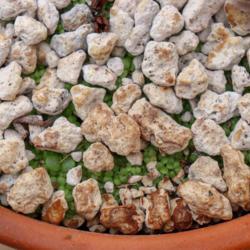For the purpose of seed starting, I follow a few rules with moisture. Baby seedlings only go in one direction, from total saturation all the time toward a cycle alternating wet and dry. Bigger seeds might go from lid on to lid off within days after germination. I'm talking peppercorn size seeds here. Smaller seeds will do better under saturated conditions for longer (dust-like seeds being extreme in this respect), and they generally require a more gradual stepwise progression as they are being weaned from humidity. That might mean some regular misting after emerging from under cover, ensuring that the soil always has some moisture in it for the weeks right afterwards. At some point I know I can water twice a week and the soil will go mostly dry at the bottom through evaporation alone. Sometimes all the way dry, depending on conditions (which are very mild, usually near room temperature). That's my basic frequency for young seedlings, twice a week in those 4 inch pots, basically until they are big enough to leave the house and go live outside. At which point they get water once a week, from there on out, in the same 4 inch pots.
This is just an example, based on the permissive conditions we enjoy, but it should hopefully give you some idea of the progression you have to go through to get from point A to point B. Part of the challenge is knowing how fast you can go, and ideally knowing which steps you can skip.
By way of an anecdote that breaks all the rules, there's a native succulent from here (Dudleya species) which makes really small, dust-like seeds. I have never actually cooked the soil and sowed the seeds and put a lid on with that plant. My solution has been to park a pot with soil and some top dressing (chunky pumice) right below a dry inflorescence, let wind and gravity work their magic, and water once a week. This pot sits in day-long sun (so much for protecting baby seedlings) and the soil dries out fully every week (so much for gradual weaning off the water). But those conditions are plenty sufficient to drive lots of germination and each year the young 'uns battle it out. The stronger plants that survive will go and get separated once they are roughly fingernail sized. I've gotten dozens of plants out of this arrangement and even though it breaks the rules I described above, that doesn't seem to matter. Then again the species is native to rocky slopes on an island 50 miles northwest of here, so it's pretty much right at home.


